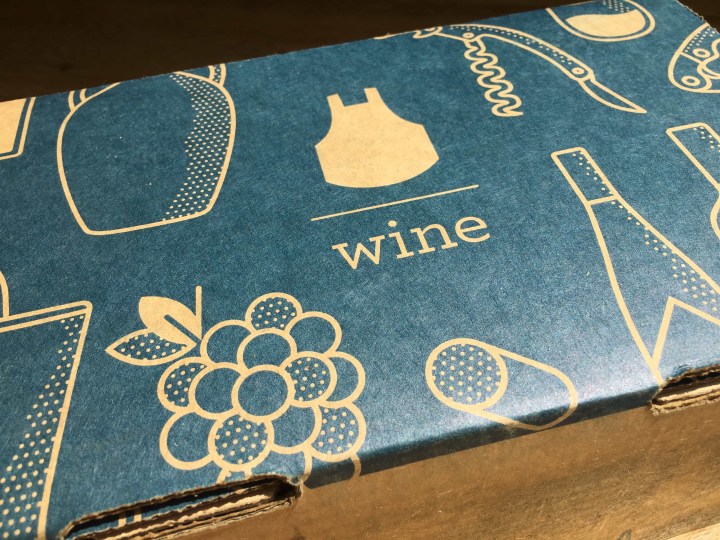
Blue Apron Wine is a subscription for people who love trying new wines as much as they love great food. You may be familiar with the Blue Apron Meal Delivery Kit subscription, which sends boxes of fresh ingredients to make exciting meals at home. The wine subscription is separate from the meal subscription, but it’s designed to complement it.
Here’s how it works: every month, for about $11 per bottle ($65.99/month, including shipping and tax), Blue Apron sends you 6 bottles of wine, plus tasting notes and pairing recommendations. The wines are selected to pair perfectly with the meals in the Blue Apron kits. The bottles are 500 ml, or 2/3 the size of a standard bottle, which, in addition to being adorable, means that you and your dining partner can enjoy your entire bottle with your meal without regretting that additional glass needed to finish a standard-sized bottle.
Blue Apron pairs with wineries around the world to bring a wide range of new and interesting wines to you each month. I love wine, and I love food, and I love everything about the idea of this subscription.

The wine comes securely packaged in a clever little box. Keep in mind that someone 21+ will need to sign for it. Everything is in great shape when it arrives, and the packaging is, happily, recyclable cardboard.
DEAL: You can try out your first box of Blue Apron dinners for $30 off with this link.
Blue Apron Wine allows you to select your wines–you can go all white, red, or mix it up. I do wish there were sparkling wine options occasionally. This month, I went with what was recommended, but it’s incredibly easy to switch out your bottles.
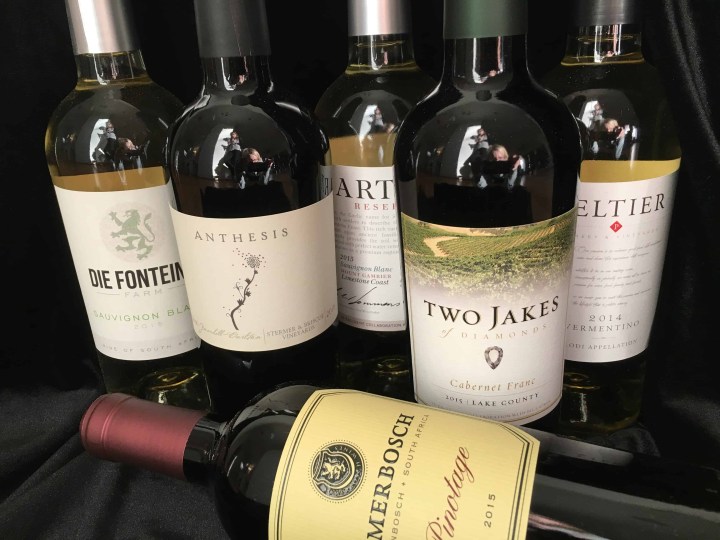
If you’re wondering what a 2/3-sized bottle looks like, here is one of the bottles with a standard-sized bottle next to it. You’ll get about 3 1/2 standard glasses in a bottle, or a generous pour plus a top-off each if you’re with a partner.
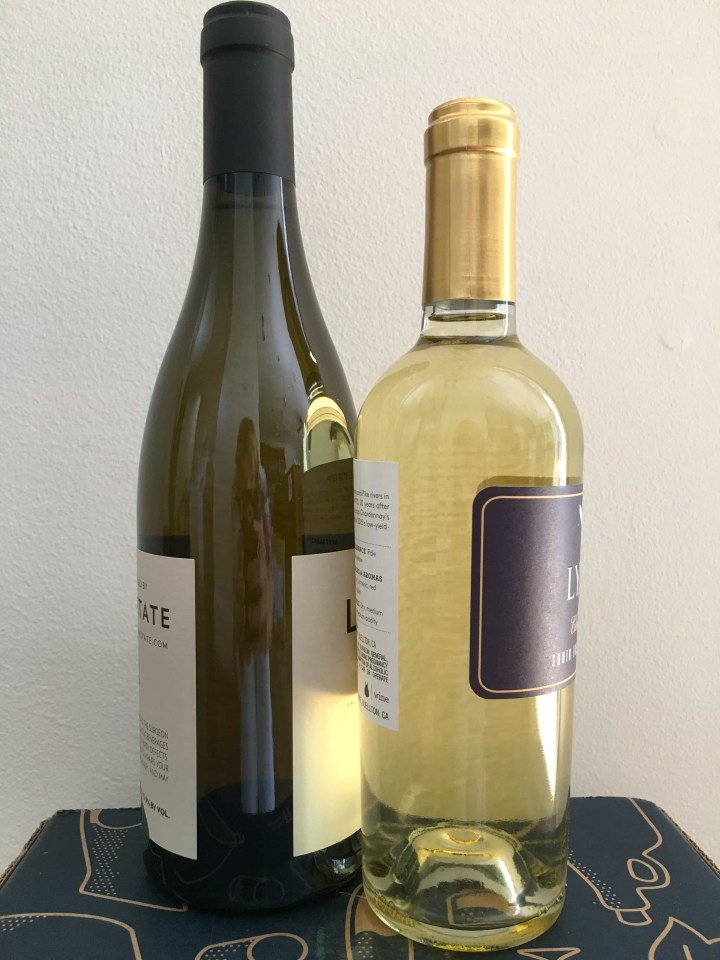
Each box comes with a great collection of tasting notes. Blue Apron tells you a little bit about the winery and how the bottle was made, plus the region at large. Because, come on, you didn’t REALLY know where the Central Coast was, did you? The info details the color, body, and structure of the wine, and also gives some thoughtful food pairings for each bottle. The info is terrific – wine is not scary, and tasting it should be fun and informative. Data is your friend.
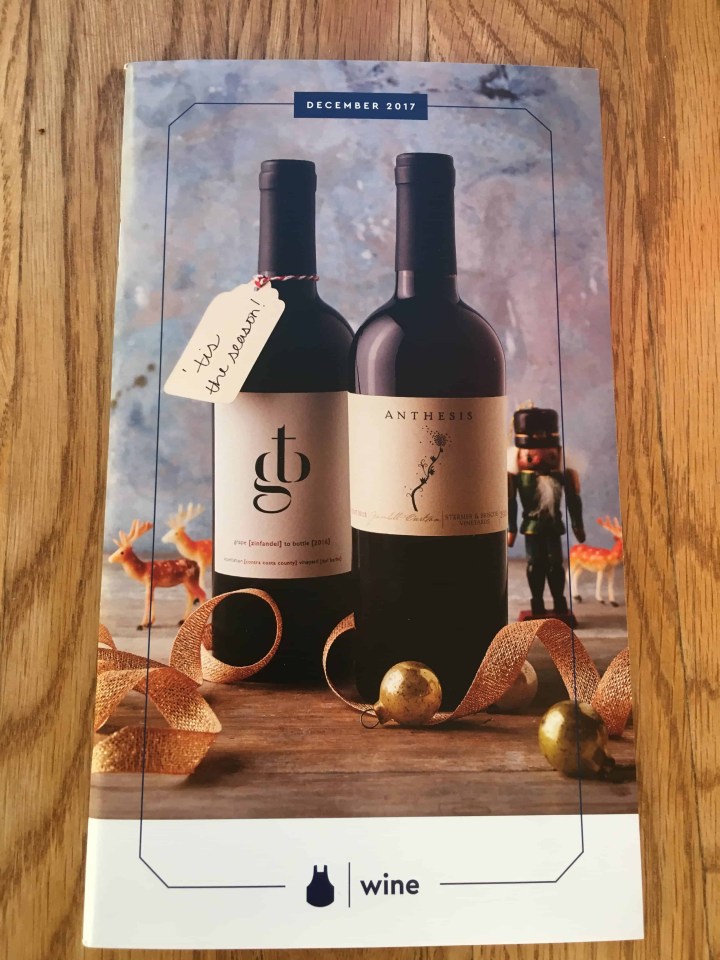
It’s December, and this month, it snowed in Mexico. End times, people. But end times (and snow days in the South) call for drinking wine, preferably in front of a fire with slippers on (or hiding in a bunker; your call). This month, we mixed it up and tried the reds in front of said fire and drank the whites with meals.
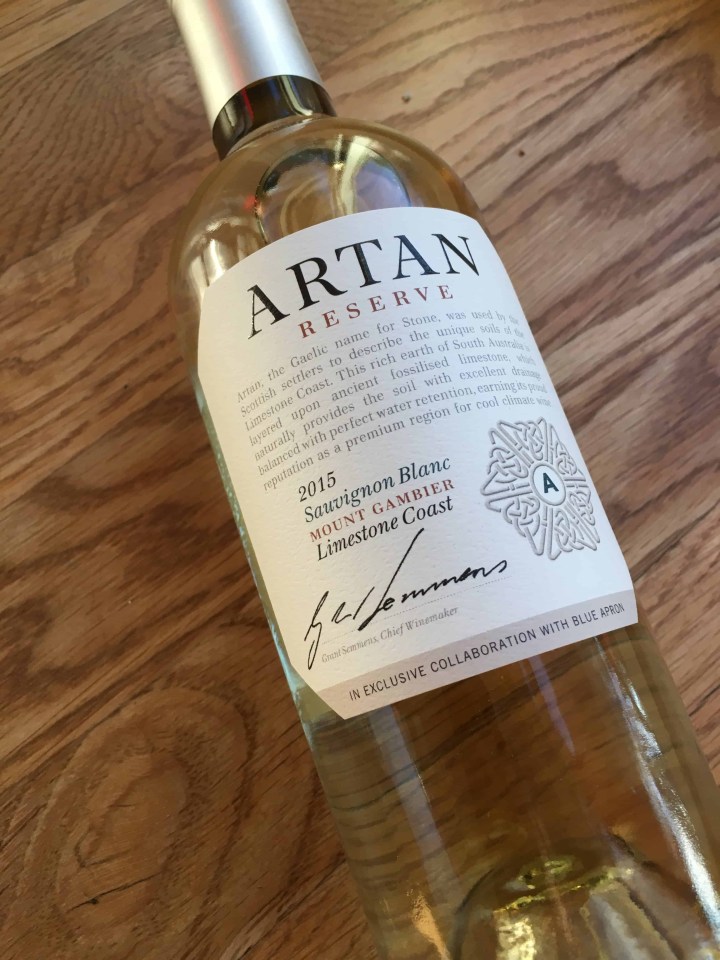
First up, the whites. Our first one was the 2015 Artan Sauvignon Blanc. This bright little bottle comes from Australia.
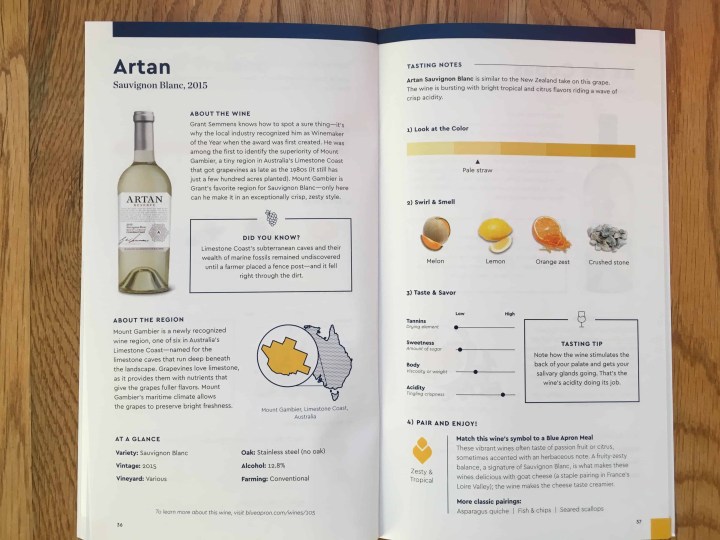
The Artan is very light in color, with a light-to medium weight. The nose is powerful with citrus and a touch of that SB melony sweetness. You taste the melon at first, too, but the bright citrus flavors dominate (a touch more sweetish orange than lemon) and finish cleanly with that acidic sharpness SBs sometimes carry. This is the more traditional model of Sauvignon Blanc, less tropical-fruit-salad and more lean fruit and stone. I thought it was terrific and easy to drink. It went beautifully with our grilled chicken, but the mineral tang would make it a great wine for seafood. I’ve wearied a bit of fat, passion-fruit-forward Sauvignon Blancs, and this is much more the style I prefer. Great start!
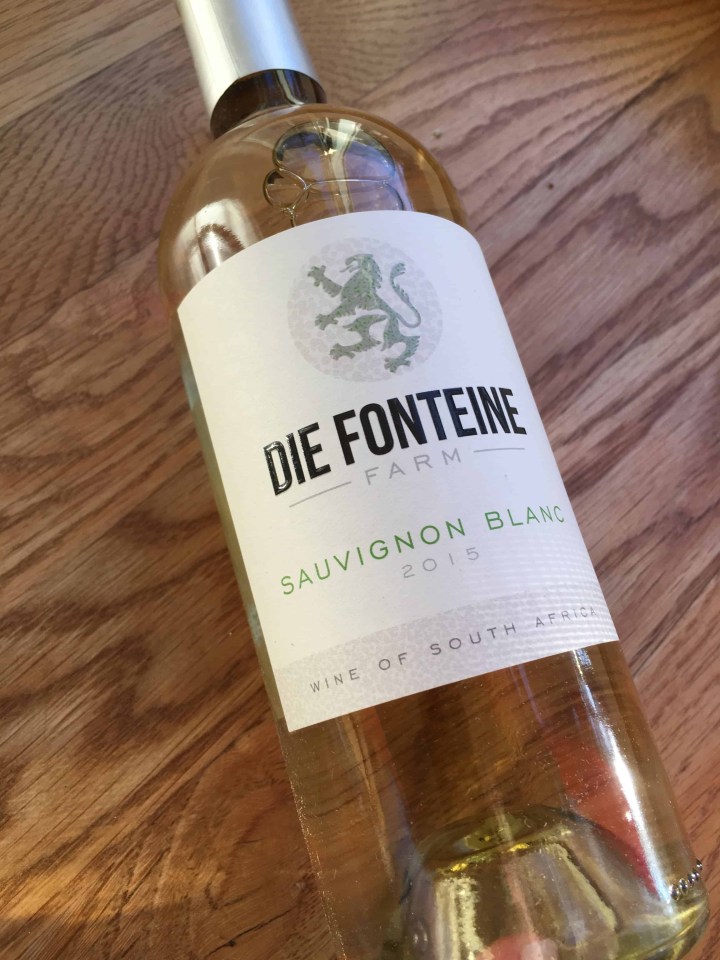
Our second white is another Sauvignon Blanc, the 2015 Die Fonteine from South Africa. South African wines were all the rage a few years ago, but I haven’t had one in a long time, so I was looking forward to trying this.
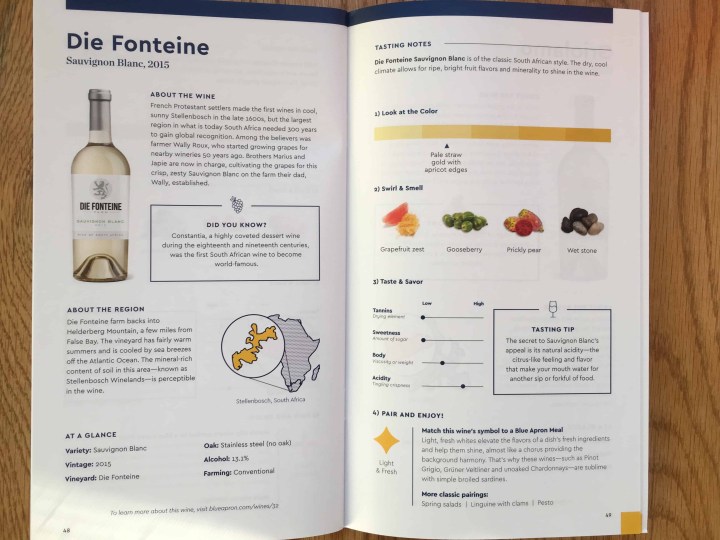
The Die Fonteine is light gold, poetically embellished with “apricot edges” in the tasting notes. The weight was a tad lighter than the Artan SB. The nose is a grapefruit bomb, and that flavor dominates, as well. I can’t say I’ve ever had a gooseberry, so I’ll have to assume the tasting notes know what they’re talking about here, but there’s a round, not-quite-sweetness to the back of this wine. The finish is short, with a little bite from the grapefruit. I didn’t taste any stone or mineral in this wine. The Die Fonteine seemed a bit unbalanced to me, and the grapefruitiness overwhelmed the flavors of the crabcakes we had with it. It might work better as an apertif wine, or maybe with a summer picnic. We drank this cold but not icy, which is normally right, but if we’d had it colder, the mineral flavors might have had a fighting chance against the fruit.
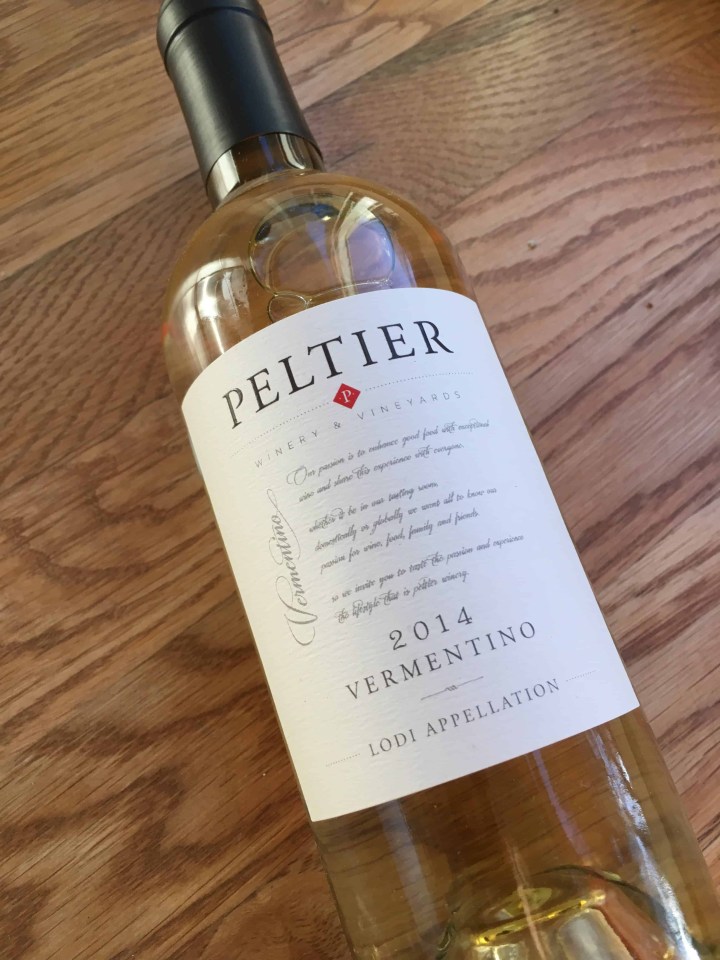
Our last white wine is the 2014 Peltier Vermentino from California. I had Vermentino once before from Blue Apron, the Uvaggio, and I thought then it reminded me of a light Sauvignon Blanc. That’ll be three for three SB-style whites this month!
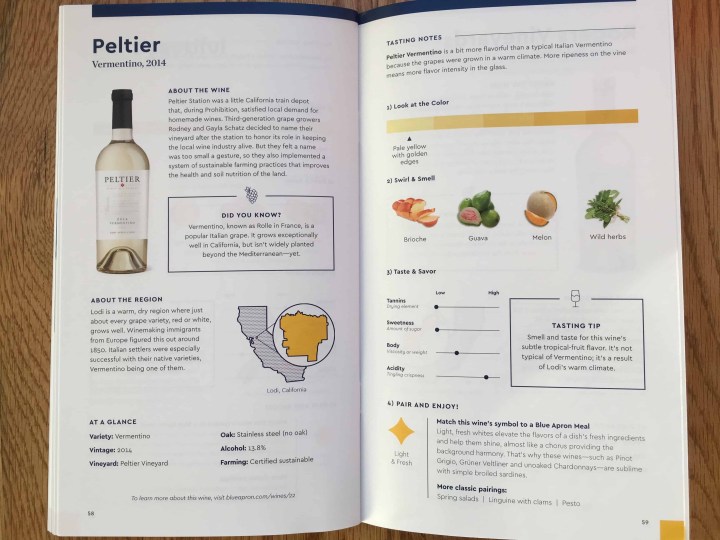
So, the tasting notes here are funny–they describe the wine (accurately, I think), but the sidebars are all about how this particular Vermentino is atypical of the varietal. It makes me want to get a old-school Vermentino from Italy and compare. The Peltier is pale gold in the glass with a medium-light body. The nose is subtle, maybe some of that sweet yeastiness described in the notes, but not much. The wine tastes to me like one of those tropical-fruit-salad Sauvignon Blancs that I was discussing earlier. The flavors drop off quickly and the high acidity keeps everything fresh and clean. If you like this style of SB, you’ll probably enjoy this wine, too. We had it with fish tacos, and it complemented them pretty well. It would go well with any light meat or even a fresh-tomato-and-mozzarella pasta. I liked the Peltier better than the Die Fonteine and not quite as much as the Artan. We drank it cold but not icy.
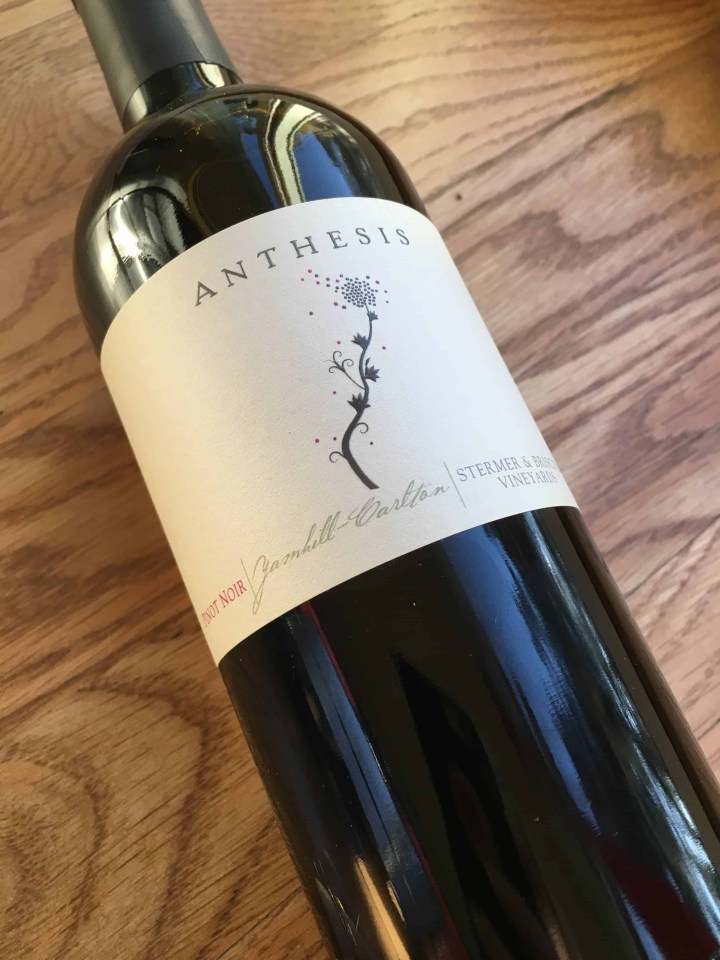
On to the reds! It snowed, the power flickered, and we kept hearing magnolia and pine branches fall around us, but it was pretty cozy in front of the fire with some red wines. Our first one was the 2016 Anthesis Pinot Noir.
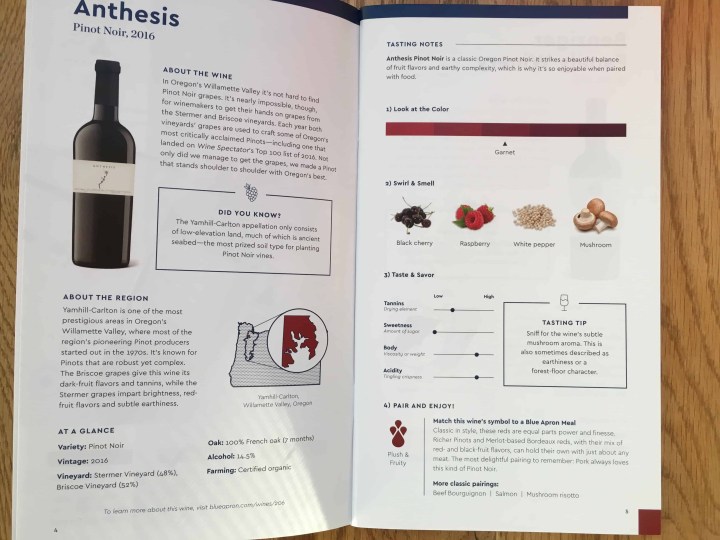
The Anthesis is from Willamette Valley, everyone’s favorite Pinot Noir appellation. It’s not clear who made this wine; the tasting notes identify the vineyards but not the winery, which happens sometimes with the Blue Apron wines. The Anthesis is a beautiful red-violet color with a medium body and that soft mouthfeel of an Oregon Pinot Noir. The nose is spicy berry with a funky (but not unpleasant) undercurrent. The dark red fruit dominates at first, but it moderates out into a round earthiness and finishes with some light tannins and acidic zip. This is a really pleasant, nicely balanced Pinot Noir. It would go well with lots of foods; pork, of course, but also grilled chicken or even risotto. I’ve been leaning away from Pinot Noirs lately, but this was our favorite bottle of the box.
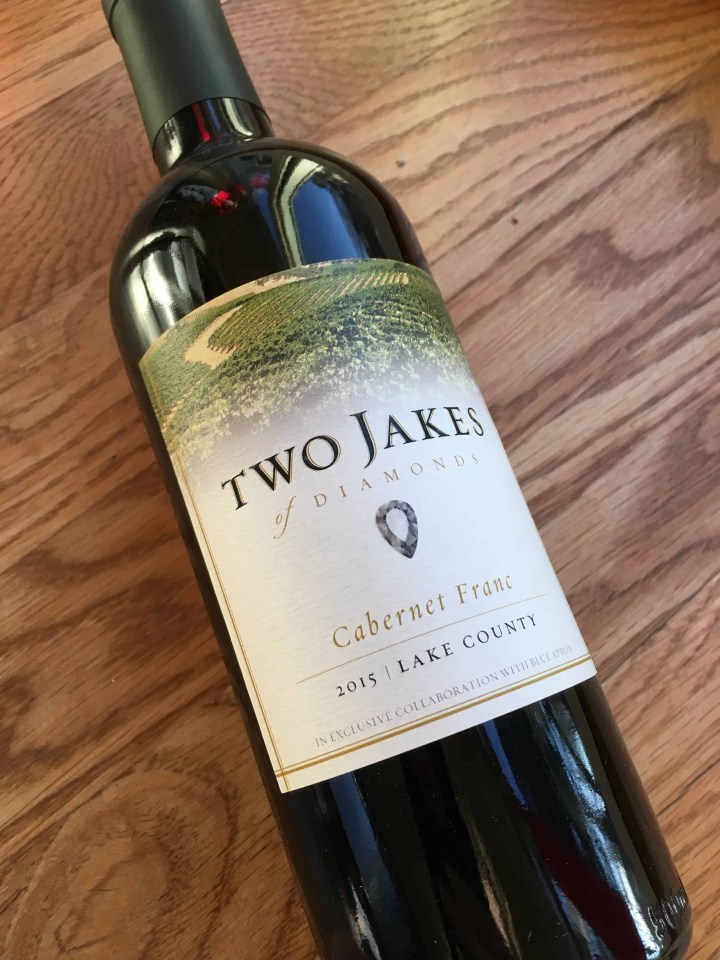
Our next red is the 2015 Two Jakes of Diamonds Cabernet Franc. Cab Franc is an easygoing wine that pairs beautifully with many different foods.
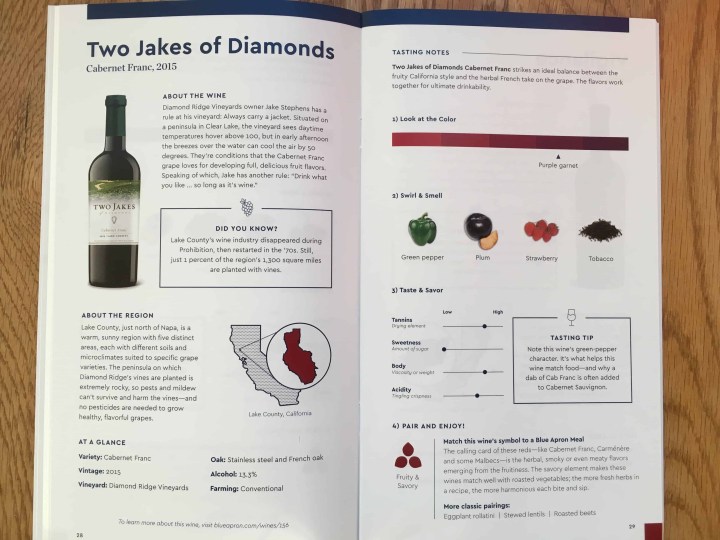
The Two Jakes is dark violet in the glass with a bright nose of green pepper and fruit. The flavor is dark fruit with a long, smoky finish and some solid tannins to keep everything firmed up. This is a tasty wine, with enough complexity to completment different foods, but with a relatively low ABV (13.3%), it won’t overwhelm your meal (or head). We really enjoyed this. I’d drink it at cool room temperature with a nice black bean stew or a pizza. Thumbs up.
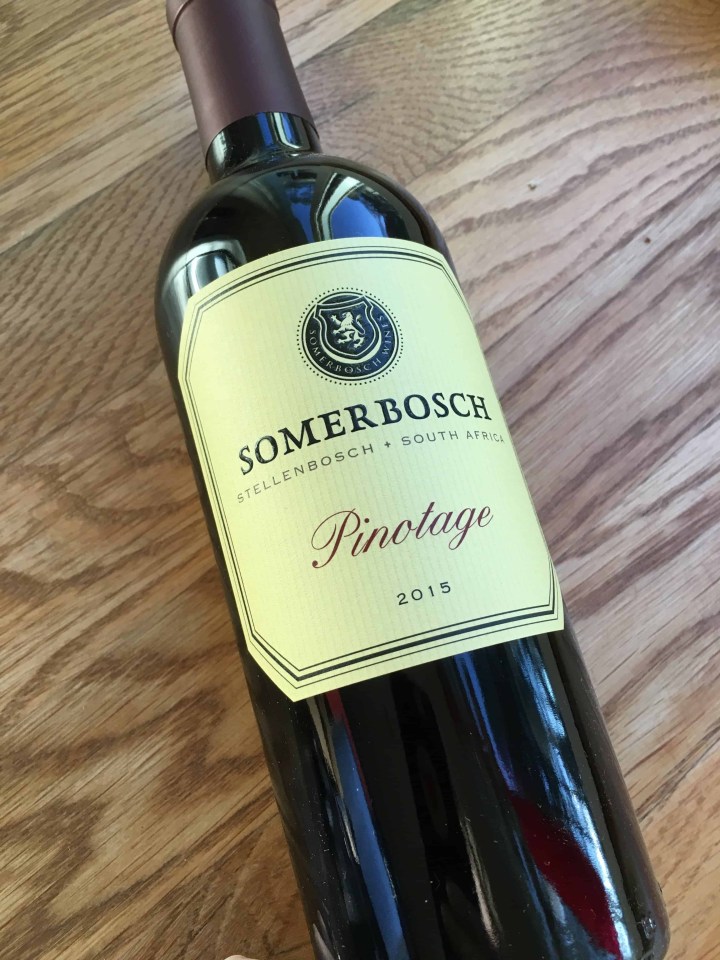
Last up is the 2015 Somerbosch Pinotage from South Africa. Pinotage is a really dark grape that makes really big, dark wine, somewhat like a Shiraz. The ABV of this one is a relatively moderate 14.4%, which is encouraging for its ability to pair with food.
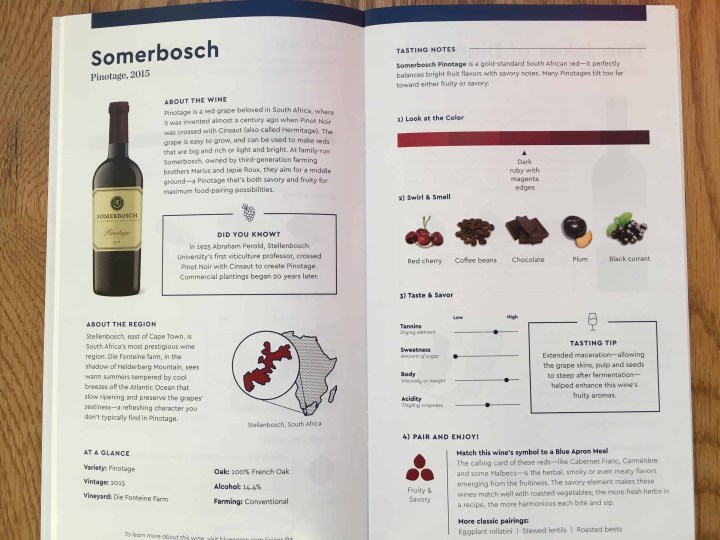
The wine is dark purple in the glass, with a fairly high body and a slow swirl of fuchsia. It has a strong nose of dark stone fruit, and that flavor carries into the wine. There are some chewy tannins in there toward the end, but the finish is dominated by dark chocolate flavors and a hint of oak. The acidity is not very high, so the finish lingers. This is a big, meaty wine that would go well with sausage or barbecued chicken. (“Game” is the traditional pairing for Pinotage, but I don’t eat much of that, so I can’t recommend it). Room temperature here.
Well, we waited out the snow and it looks like End Times might have to wait for another day. December’s Blue Apron box was full of wines from all over the world, and we really enjoyed tasting them.
In the event you’re gifting wine this holiday season, Blue Apron has some sensible advice for you:
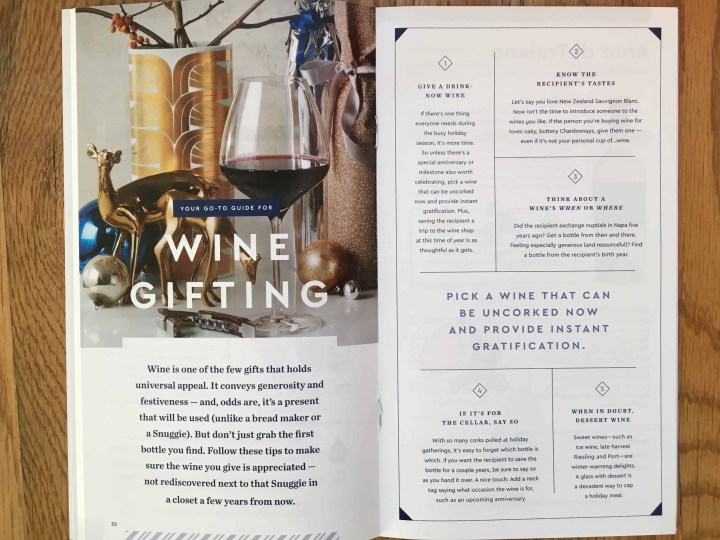
By the way, Blue Apron has a new system for pairing its wines and its food subscriptions, somewhat like you might have seen in nicer grocery stores — the wines are categorized by type (crisp & minerally, plush & fruity, etc.) and then that symbol shows up on the food recipes. Pair any wine of the recommended type to the food, and voila — you have a great meal!
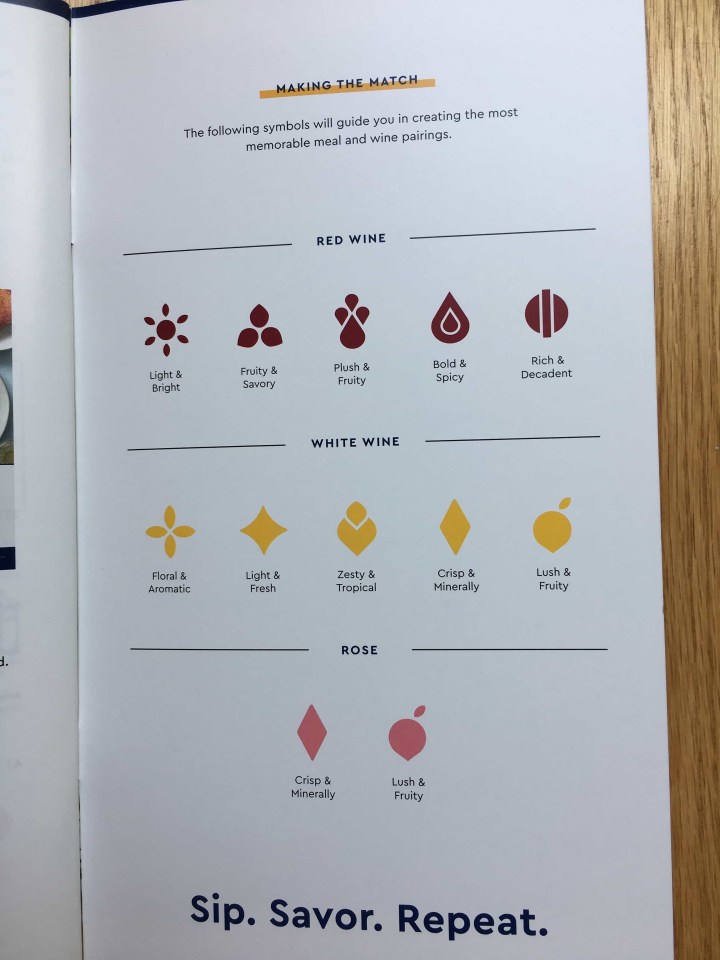
Have you tried Blue Apron Wine? What do you drink on snowy nights? Tell us in the comments below!




Comments